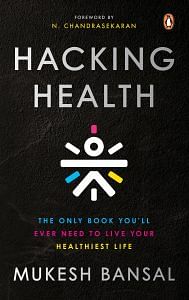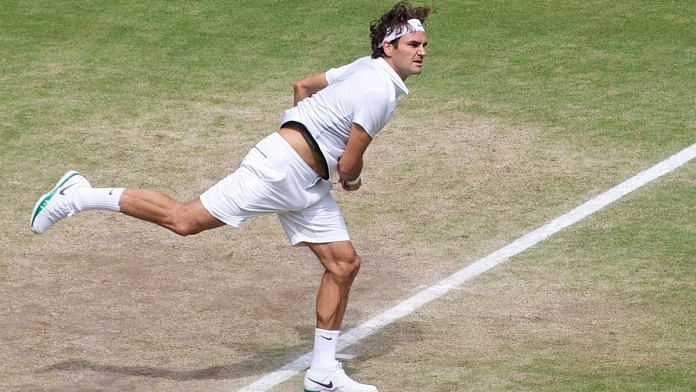The human body is pretty amazing and is able to repair itself from wear and tear in almost magical ways, from the way a cut scabs over until it seems as though the wound never existed, to the way your stomach heals itself from an infection without medication. However, as we age, and as we engage in activities that go beyond natural wear-and-tear, we need to aid and even boost recovery to ensure we stay at the top of our games. A marathon, for example, is not a normal amount of exertion for the body. Pushing ourselves constantly, without giving our self-repair mechanisms time to kick in, could lead to serious and long-term health effects, including on our immune and nervous systems. Recovery, therefore, is more than protecting yourself from aches, pains and injury. It is also about shoring up every aspect of health through a rigorous regime.
Lately, the science of recovery has received a great deal of attention, and many health hacks focus on recovering, not only from the strenuous workouts we often subject ourselves to, but also from the wear and tear of everyday life. We face multiple stressors, from our lifestyles and environment, to work pressures and lack of sleep, each of which takes its toll on the body and mind. For good long-term health, recovery is as important as, or even more important than, an active lifestyle. Without a recovery plan, intense activity will run you down, leaving you exhausted and exposed, susceptible to reduced immunity and faster ageing.
Modern athletes take their recovery very seriously, whether it involves regular massages and travelling physiotherapists, or ice baths and red light therapy. For some, like Roger Federer and Tom Brady, their recovery happens during the ten to twelve hours a night they sleep, to let their bodies heal from the beating it takes on the court and field.
Pushing our minds and bodies out of their comfort zones through intense periods of training results in the release of the hormone cortisol. Cortisol boosts performance in the moment but also initiates the stress response, with a host of physiological effects. When we workout, our muscles accumulate micro-tears that need to be repaired for the muscle to grow. Repeated movements, like those performed at the gym, lead to the tightening of muscles that eventually knot together and form a lump. This can cause pain and affect performance and range of motion. Beyond physical activity, even our posture as we sit at our desks or the quality of the air we breathe on our commute can deplete our body’s resources Recovery requires acknowledging the natural stressors in our lives and proactively working to stem their effects. The good news is that we now have all kinds of tools at our disposal. From ancient recovery techniques to modern gadgets, we have a plethora of options to pick from. Even though sleep and meditation remain the most potent recovery tools, there are many others that are well suited to specific stressors or matched to specific health goals. Here are a few for you to choose from.
Recovery techniques vary from the more basic at-home foam rollers and heat packs, to ancient methods now backed by science such as saunas and steam baths. And then there is the next level of recovery, with devices that often look like they came out of a futuristic, sci-fi graphic novel. Research into many of these is still in early stages, and there are several tech companies working on exciting new products, so this is a fascinating area to follow, and I, for one, am staying tuned.
After an intense workout, one of the simplest things to do is perform a few minutes of soft tissue mobilization using a foam roller or similar device. You can spend 10–20 seconds on each muscle region and more time on particularly tender spots. Another great tip is to roll a tennis ball beneath your feet—this releases tension and improves lower body range of motion. Stretching is another important part of post-workout recovery and doesn’t require any equipment. Stretching lengthens muscles that might shorten and tighten during exercise. It’s best to hold each stretch for about thirty seconds, and to avoid stretching regions that are especially painful in case of injury.
Compression therapy might be the next big thing in the prevention of DOMS. Wearing a garment that applies compression to specific body parts in a balanced and accurate manner can boost blood flow, which in turn increases the oxygen available to muscles. This leads not only to better performance, but allows muscles to sustain higher levels of performance for longer periods while speeding up muscle repair.
Saunas are enclosed rooms with high temperatures and low humidity, usually attached to spas, hotels or gyms, though they have been used by humans for thousands of years. They are excellent, not just for post-workout recovery to relax sore muscles and relieve tension, but also for general well-being, boosting cardiovascular health and immunity. Steam baths, that have high humidity levels and slightly lower temperatures compared to saunas, have similar benefits, while also being great for skin health.
Ice baths have been a favourite of elite athletes for some time now, but more and more people are recognizing their value. They have gone from simple tubs filled with ice, to more hightech equipment that people can use at home and even travel with. Studies on athletes—including martial arts competitors and rugby players—have found that ice baths reduce the intensity of DOMS and muscle fatigue, thus speeding up recovery. While research is
ongoing, an ice bath does bring immediate relief, boosts relaxation and can improve sleep. Taking it a notch up is cryotherapy, usually administered in a professional setting. The mechanism at work is the same that ice baths use—cold exposure leads to vasoconstriction or constriction of blood vessels, lowering the inflammatory response.
Massages are part of many ancient healing traditions, and while the jury is still out on their effectiveness, there is no doubt that they boost relaxation and relieve stress. When muscle tension and knots become chronic, physical therapists might recommend dry needling, in which a fine needle is inserted deep into the belly of a muscle to break the scar tissue and separate the fibres that might have fused to create that knot.
In addition to these, there are some very cool high-tech devices that can be used at home. You can choose from handheld percussive ‘guns’ that can be linked to apps on your phone,
electric muscle stimulators that boost recovery from injury and compression boots. There are even specially designed mattresses to transform your recovery journey. For days you don’t have time to get in a workout or if you’re feeling fatigued or unwell, you can try using a neuromuscular stimulation device (NMES) which mimics the muscular contractions of exercise. This can boost lymphatic drainage of cellular waste that builds up with intense exercise and speed up blood flow for healing.
If the pain or soreness after a workout feels more than usual, and you suspect you have an injury, it’s best to check with your doctor or physiotherapist before picking a recovery method most suitable to your injury or ailment. It is sometimes apt to think of the body as a machine. Just as a machine requires periodic maintenance, our bodies, which undergo a lot of regular wear and tear, do too. As we go about our day-to-day activities or workouts, we accumulate damage and stress which add up. Recovery plays a crucial role in the long-term health of the body and mind, whatever form it may take.
 This excerpt from Hacking Health by Mukesh Bansal has been published with permission from Penguin India.
This excerpt from Hacking Health by Mukesh Bansal has been published with permission from Penguin India.






